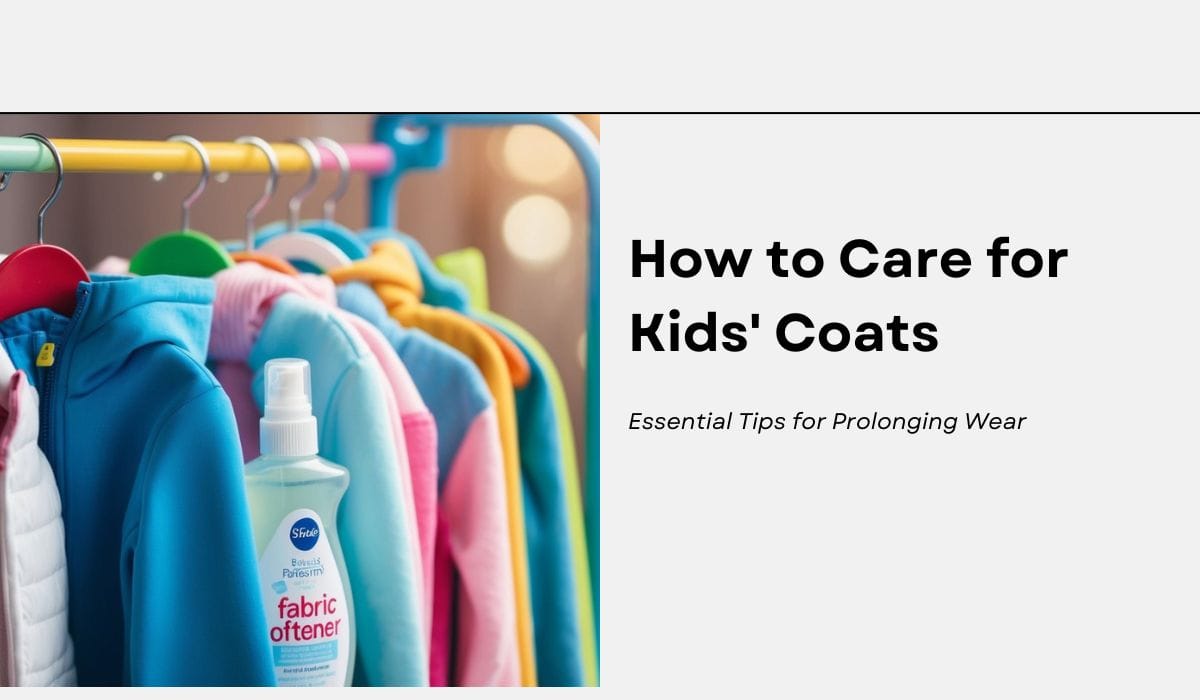Winter is here, and keeping your kids’ coats clean and in good shape can be a real challenge. As a parent, I know how quickly those coats can get dirty and worn out. But don’t worry, I’ve got some tips to help you care for your children’s coats and keep them looking great all season long. The key to maintaining kids’ coats is regular cleaning and proper storage.
Caring for your child’s coat doesn’t have to be a chore. With a few simple steps, you can keep their coats looking fresh and new. From spot cleaning to gentle washing, there are many ways to tackle dirt and stains. Plus, proper storage can help maintain the coat’s shape and extend its life.
On This Page
Key Takeaways
- Regular cleaning and proper storage keep coats in top condition
- Different coat materials require specific care methods
- Teaching children to care for their coats helps build responsibility
Understanding Coat Materials and Types
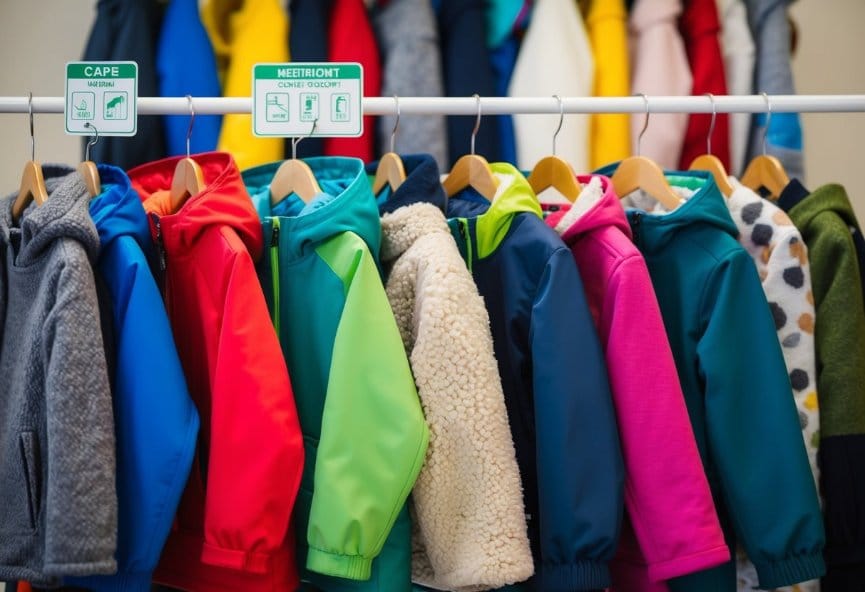
Kids’ coats come in many different fabrics and styles. Each type has its own qualities that affect warmth, durability, and care needs. Let’s look at common coat materials and popular winter styles for children.
Identifying Different Kids’ Coat Fabrics
I’ve found that wool is a classic coat material that’s warm and naturally water-resistant. It can be itchy though, so look for lined wool coats. Cotton is breathable but not very warm or water-resistant on its own. Nylon and polyester are lightweight, quick-drying synthetic fabrics often used in winter coats. They’re durable and easy to clean. Fleece is soft and warm but not waterproof. It’s often used as a lining or mid-layer. Down feathers provide excellent insulation in puffer coats but lose their warmth when wet. Synthetic down alternatives stay warm even when damp.
Characteristics of Winter Coats and Puffer Coats
Winter coats for kids should be warm, water-resistant, and durable. I recommend looking for coats with wind-blocking outer shells and warm insulation. Puffer coats are popular winter options. They’re filled with down or synthetic insulation to trap heat. The puffy design creates air pockets for extra warmth. Most puffers have water-resistant outer shells too. This combo keeps kids cosy in cold, wet weather. Puffer coats are also lightweight and packable. This makes them easy for kids to carry. Many have special features like snow skirts, adjustable hoods, and fleece-lined pockets for extra comfort.
Selecting the Right Coat for Your Child
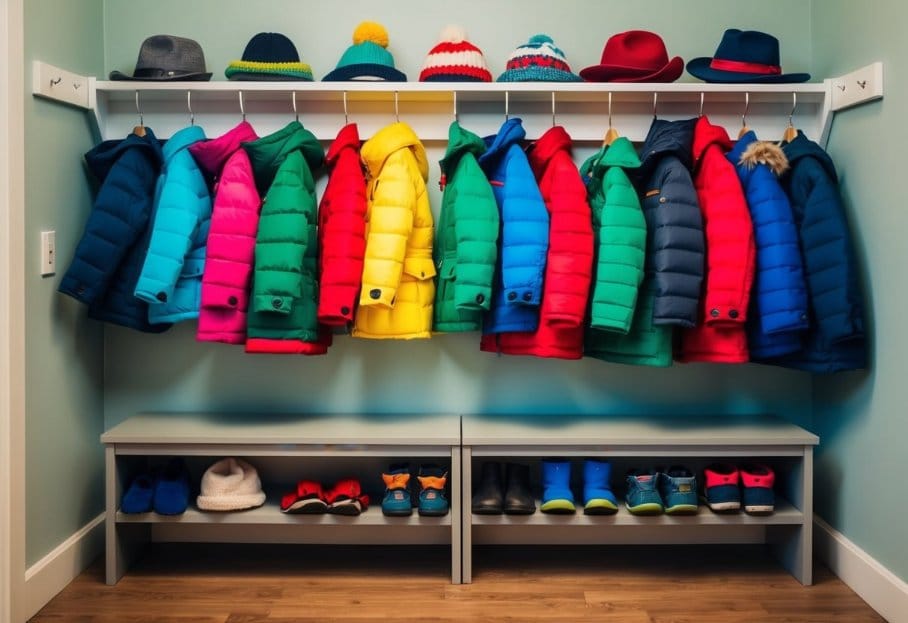
Picking the perfect coat for your child involves balancing comfort, practicality and style. I’ll cover key factors to consider, from weather protection to getting the right fit.
Considering Weather Conditions and Insulation Needs
When choosing a coat, I think about the local climate first. For cold winters, I look for thick, insulated coats with high fill power ratings. Puffer jackets work brilliantly, offering warmth without bulk.
For milder climates, I opt for lighter jackets or raincoats. Waterproof and breathable fabrics are a must for rainy areas.
I always check for features like:
- Adjustable cuffs
- Snug, well-fitted hoods
- Water-resistant outer layers
These help keep kids dry and cosy in various conditions.
Sizing and Fit: Ensuring Room for Growth
Getting the right size is crucial. I buy coats slightly larger to allow for growth, but not so big they’re impractical.
Here’s what I look for:
- Sleeves that cover the wrists
- Room for layering underneath
- A hem that falls below the waist
I make sure kids can move freely in their coats. Zips and buttons should be easy for little hands to manage.
For toddlers, I prefer coats with extra length in the back for nappy changes. Adjustable waists are brilliant for customising the fit as children grow.
Maintenance and Care Tips
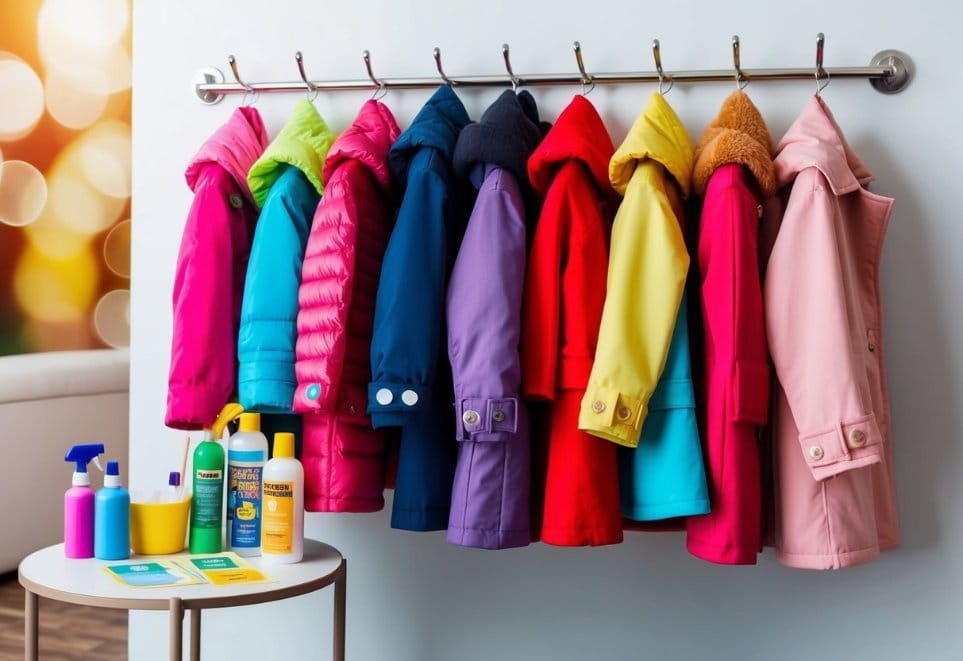
Keeping kids’ coats clean and in good shape takes some effort. I’ll share my best tips for cleaning, storing, and fixing coats to help them last.
Cleaning and Storing Kids’ Coats
I always check the care label first before washing any coat. For most fabric coats, I wash them in cold water on a gentle cycle. I use a mild detergent made for delicates.
Puffy coats need special care. I wash them separately on a gentle cycle and add tennis balls to the dryer to fluff them up. For wool coats, I spot clean stains and only wash when really needed.
After washing, I make sure coats are fully dry before storing. I use sturdy hangers to keep the shape. For long-term storage, I put coats in breathable garment bags or bins.
I add cedar blocks or lavender sachets to keep moths away. I store coats in a cool, dry place away from sunlight.
Repairing Damaged Coats
Small tears are easy to fix at home. I use iron-on patches for puffy coats and hand-sew patches on other fabrics. For loose buttons, I sew them back on with strong thread.
Broken zippers are trickier. If the zipper pull is broken, I replace it. For jammed zippers, I rub a pencil on the teeth to unstick them.
I take coats to a tailor for big rips or broken seams. They can also replace worn-out linings or resize coats that are too big.
To prevent damage, I teach my kids to be careful with their coats. We avoid sharp objects and rough play while wearing them.
Teaching Children Coat Care Responsibilities
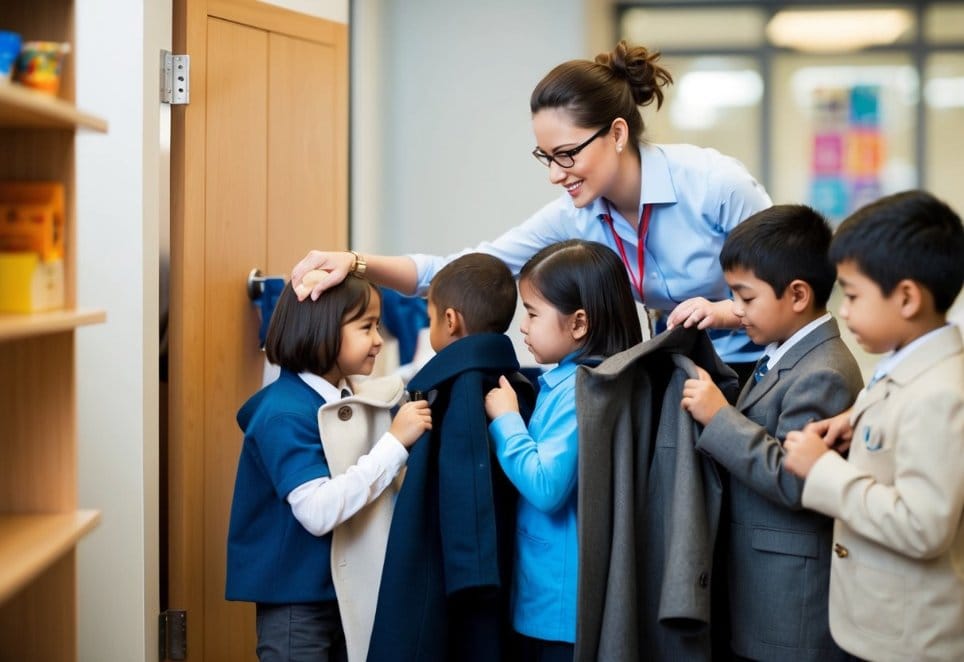
Teaching kids to look after their coats builds important life skills. It helps them become more self-reliant and learn to value their belongings.
Fostering Independence Through Self-Maintenance
I find that giving kids simple coat care tasks works well. I teach them to hang up their coats when they come home. We practise putting coats on coat hooks or hangers together. For younger kids, I use lower hooks they can reach easily.
I show them how to zip and unzip their coats properly. We play games to make it fun, like racing to zip up first. I also teach them to check pockets and remove items before washing.
For older kids, I explain how to spot-clean small stains. We use a damp cloth to gently dab at marks. I stress being careful not to rub too hard.
Inculcating Values of Cleanliness and Organisation
I make coat care part of our regular routine. We have a weekly “coat check” where we look over coats together. I ask kids to notice any dirt or damage.
I teach them to brush off dried mud or dust with a soft brush. We talk about why it’s important to keep coats clean. I explain how it makes coats last longer and look nicer.
I help kids organise their coat storage space. We use labelled bins for mittens and hats. I show them how to fold scarves neatly. By involving them in these tasks, I help build good habits that will serve them well as they grow.
Making Economical Choices

Buying kids’ coats doesn’t have to break the bank. I’ll share some smart ways to save money while still getting quality coats for children.
Navigating Sales and Promotions for Cost Efficiency
I always keep an eye out for sales and promotions when shopping for kids’ coats. End-of-season sales are great for finding discounts on winter coats. I check both online and in-store for the best deals.
Many shops offer loyalty programs or email newsletters with exclusive discounts. I sign up for these to get advance notice of sales.
Some stores have clearance sections where I’ve found amazing bargains on coats. It’s worth checking these areas regularly.
I also look for coupon codes before making online purchases. These can often save me an extra 10-20% off the sale price.
Opting for Quality Over Quantity
I’ve learned it’s better to buy one good coat than several cheap ones. Quality coats last longer and often work out cheaper in the long run.
I look for coats made from durable materials like wool or waterproof synthetics. These stand up better to wear and tear.
Adjustable features like cuffs and waistbands help coats fit for longer as kids grow. This means I don’t need to buy new coats as often.
I choose classic styles and neutral colours. These are more likely to stay in fashion and can be passed down to younger siblings.
Investing in a good coat also means it can be resold when outgrown, recouping some of the cost.

